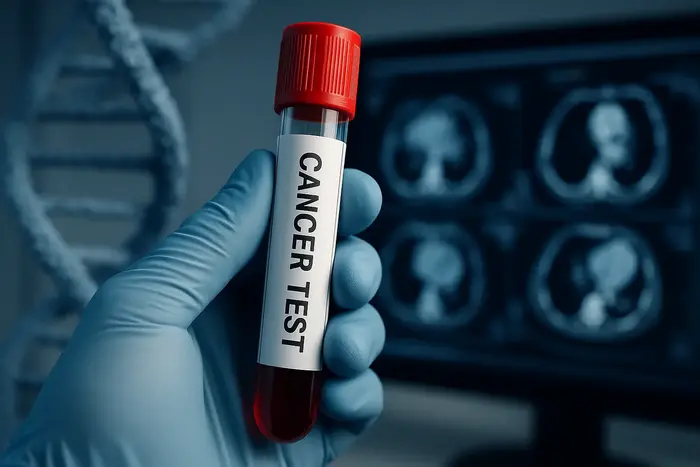Revolutionizing Early Cancer Detection: Why Detecting Tumor DNA Early Matters
Early cancer detection saves lives, and now scientists can detect tumor DNA early—sometimes years before any symptoms appear. Cancer is most treatable when discovered at its earliest stage, yet conventional screening methods sometimes miss these crucial warning signs. Today, innovative research from Johns Hopkins Medicine provides real hope for earlier intervention. Thanks to cutting-edge technology, scientists can now detect tumor DNA early in the bloodstream, sometimes up to three years before clinical symptoms appear. This remarkable progress may reshape the entire landscape of cancer diagnosis and patient survival.
Early detection not only increases the likelihood of a cure but also allows for less invasive procedures, fewer side effects, and a better overall quality of life. Many specialists predict that the ability to detect tumor DNA early will be a pivotal breakthrough, ushering in a new era of precision medicine.
How Scientists Detect Tumor DNA Early: The Science Behind the Discovery
A collaborative team at Johns Hopkins recently investigated how genetic material from tumors, called cell-free DNA, circulates in the blood long before a cancer diagnosis. By applying ultra-sensitive sequencing technologies, researchers identified these DNA fragments in blood samples, bringing a transformative new approach to early detection. Their findings, published in Cancer Discovery, prove that detecting tumor DNA early is no longer a distant dream—it is quickly becoming a clinical reality.
To determine just how far in advance cancers could be discovered, the research team analyzed samples from the large Atherosclerosis Risk in Communities (ARIC) study. Among 52 participants, tumor mutations were detectable in blood up to three years before official diagnosis. In several cases, these genetic signals appeared long before any clinical signs or symptoms developed. This discovery offers a significant window for earlier intervention and improved outcomes.
Importantly, this approach works for more than just one type of cancer. Detecting a range of tumor DNA fragments enables multi-cancer screening through a single blood test. This innovation paves the way for regular, non-invasive screenings that could potentially save thousands of lives each year.
A Closer Look: Multi-Cancer Early Detection (MCED) Tests
One of the most exciting advances in this field is the Multi-Cancer Early Detection (MCED) test. These sophisticated tests utilize advanced genetic sequencing to detect tumor DNA early, often before a patient feels unwell or shows symptoms. In the Johns Hopkins study, participants with positive MCED results were diagnosed within months of testing. Even more striking, scientists found tumor DNA mutations in samples collected years before diagnosis in several individuals, emphasizing just how early the disease can be spotted.
The success of MCED tests highlights their potential to revolutionize screening programs worldwide. Early diagnosis usually means tumors are smaller, less aggressive, and easier to treat. Using MCED tests to detect tumor DNA early allows healthcare providers to identify cancer risks sooner, leading to timely and potentially life-saving treatment.
The Real-World Impact: Why Early Detection Changes Outcomes
The power to detect tumor DNA early is changing the way doctors and scientists approach cancer care. Dr. Yuxuan Wang, lead author of the study, notes that finding cancer this early provides both patients and clinicians with invaluable time to plan, intervene, and manage treatment effectively. Early intervention can often mean the difference between a quick, complete recovery and a prolonged struggle with advanced disease.
MCED testing also has the potential to reduce the need for invasive biopsies and unnecessary procedures. Individuals who test positive can be monitored more closely, while those with negative results may avoid excess testing. This fosters a more personalized and targeted approach to medicine, tailored to each person’s genetic risks and needs.
Looking Forward: The Future of Detecting Tumor DNA Early
While the progress is extraordinary, ongoing research and clinical validation are vital. MCED tests are evolving rapidly, but developing clear guidelines for follow-up and management after a positive result remains essential. Experts continue to refine the technology, expand its accuracy, and ensure it works for diverse populations and cancer types.
In the coming years, next-generation early detection could feature even more advanced blood testing, artificial intelligence-powered analysis, and precision treatments tailored to individual genetic profiles. The vision is simple but powerful: make early detection accessible for everyone, reduce the number of late-stage diagnoses, and significantly improve survival rates globally.
A New Era in Cancer Care: Detect Tumor DNA Early for a Healthier Future
The journey to detect tumor DNA early is only just beginning, yet the potential is immense. Every scientific discovery brings us closer to a future where cancer is caught sooner, treated more effectively, and lives are saved. Embracing regular screening, understanding personal risk factors, and supporting continued research are all crucial steps in advancing the fight against cancer.
The following post may interest you
Immune Treatment May Work Against Several Cancer Types
Technology That Can Turn Cancerous Cells Back to Normal
Source
Detection of Cancers Three Years prior to Diagnosis Using Plasma Cell-Free DNA

